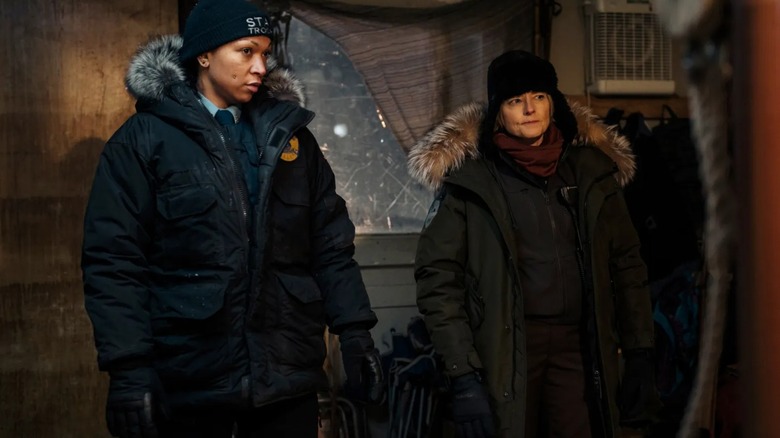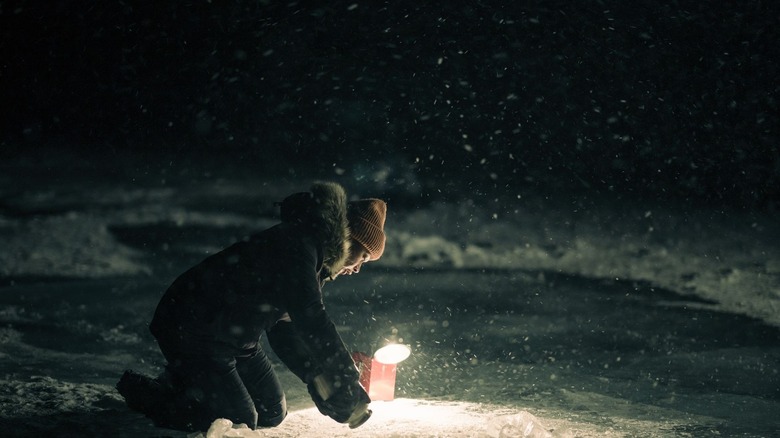True Detective: Night Country's Cast & Crew Were In Real Danger Behind The Scenes
In "True Detective: Night Country," the Alaskan mining town of Ennis feels tinged with something stranger than months of endless darkness. The extreme cold of the icy plains adds to the sinister aura of the town. The disappearance of a group of researchers — the newest case that baffles the town's police department — seems to be linked with the unsolved murder of a local woman, whose absence (and in some cases, presence) continues to haunt the living. Although "Night Country" basks in the beauty and horror of its fictional Alaskan town, the series was almost entirely filmed in Iceland, which came with a unique set of challenges for everyone involved.
Series cinematographer Florian Hoffmeister ("Tár") spoke to IBC about the obstacles faced by the cast and crew while filming in such an intensely cold and dark location. "We were doing prep for the show in Iceland in August when the sun doesn't set until midnight, but planning to shoot in October for a story that is set in almost endless darkness," Hoffmeister explained, while also praising Iceland's natural beauty when submerged in darkness. As "Night Country" is set in an environment where the endless dark and cold shapes Ennis and its residents, Hoffmeister had to tweak his lighting strategies accordingly, while ensuring that the darker supernatural undertones of the episodes were sustained.
Although the lighting issues were resolved with some creative maneuvering, the cast and crew also had to be wary of Iceland's natural conditions, including dangerous gale-force winds that could cause serious harm if they didn't wrap up and evacuate on time. Here's what Hoffmeister had to say about filming around such extreme conditions.
Skirting danger while filming True Detective: Night Country
Lighting is a crucial part of filming in a naturally low-lit location, as it can make or break how a scene looks or makes the viewer feel. Complete, obtuse darkness robs even the most intense moments of their edge, and Hoffmeister was dedicated to ensuring that the white icy exteriors complemented the lighting approach of well-lit faces that capture every emotion. However, the natural conditions of Iceland often made filming dangerous and unpredictable:
"It can become windy very quickly and when it does, you do have to evacuate the area. Even [when] shooting a 45-minute drive from Reykjavík, you are, in effect, extremely remote. And remember, it is dark. So when you are told to leave a place, you have to do so, it would be dangerous otherwise."
The traditional method of mounting lights on cranes for exterior shots was out of the question due to icy gusts of wind, so Hoffmeister worked around this issue by using an actor's headlamp to light up their face and evoke a transition from low light to darkness. He explains:
"Then there is the feeling of isolation and the vastness of nature that we need to convey, so I thought [about] where we need to see the landscape. We can't put the lights high in the air, but neither could we fill in from the front with conventional lights because then the actor's faces would look terribly bright and washed out in the foreground."
In some cases, the precious hours of daylight were put to good use: for instance, Rose (Fiona Shaw) skinning a wolf outside her hut was shot with the intention "to play with the magic of the sky and landscape." Most of the other scenes, though, were filmed right before darkness consumed everything.

